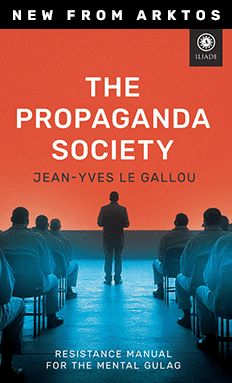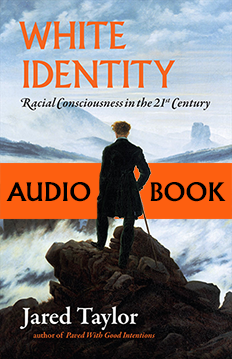What Stands in the Way for Minority College Students Trying to Graduate?
Olivia Sanchez et al., NBC News, October 11, 2021
When Diamante Hare stepped onto Northeastern Illinois University’s campus in Chicago for the first time in 2018, he was gambling with thousands of dollars of grants, scholarships and loans — as well as his future. As gambling tends to go, the odds were against him.
Away from his predominantly Black West Chicago neighborhood for the first time, Hare felt uncomfortable. He was unsure what to expect or how he would fit in. There were other Black students on campus, but of the 20 Black freshmen he remembers becoming friendly with at the start of the year, 17 didn’t make it past the first semester, he said.
Hare, a senior, is on track to graduate without having transferred, withdrawn temporarily or gone part time. That’s unusual. At Northeastern Illinois, only 11 percent of Black students graduated within six years in 2019. Even fewer graduated within four, as Hare plans to do.
White students at Northeastern Illinois University are five times more likely to graduate than Black students and more than three times more likely to graduate than Latino students, according to federal data.
The problem is pervasive: Nationally, white students at public colleges are 2½ times more likely to graduate than Black students and 60 percent more likely to graduate than Latino students.
A variety of reasons contribute to the gaps. Financial pressure — whether sheer lack of funds or the need to hold down paying jobs while in college — is a primary reason. Spending excessive time in remedial classes that carry no college credit but drain financial aid is another. Many Black and Latino students may also drop out because they feel excluded or isolated.
In some states, the gaps in graduation rates are particularly acute: At every four-year public college in Illinois and Missouri for which data were available, for example, there were gaps of at least 14 percentage points between white and Black students in 2019.
Illinois, which has the sharpest disparities between Black and white students, ranks fourth worst for the gap between Latino and white students.
Northeastern Illinois has about 5,600 undergraduates, of whom 39 percent are Hispanic, 27 percent are white and 11 percent are Black. Over half of all students receive Pell Grants, the federal aid for low-income families. Many students are over age 25; many attend part time. Working long hours outside school can also thwart progress toward graduation.
{snip}
For senior Edgar Martinez, 28, for example, even financial aid is out of reach; he immigrated to the U.S. as a teenager and doesn’t have citizenship or any protective legal status, so he’s working to pay for college, juggling shifts at a grocery store and waiting tables. He said Northeastern Illinois would have seemed more welcoming to him if it had offered more flexible class times.
{snip}
Alexis Smith, a senior majoring in communications, began taking remedial courses at a nearby community college in January 2015 and eventually finished her associate degree before transferring to Northeastern Illinois in January 2019.
As a Black woman with a physical disability, Smith struggled to find community on campus. She uses a wheelchair and said she has been disappointed not to have found any affinity groups for students like her. She said she tried to join a sorority on campus but was turned down.
“What is it about me?” Smith said she asks herself. “Is it because I’m Black and most of the girls in the sorority are either white or Hispanic? Or does it not have anything to do with race at all? Is it because I have a disability? I’ve never seen a woman a part of a sorority with a disability before. Do they feel like I look too different?”
{snip}
Rutgers University-Newark, part of New Jersey’s state university, has raised its graduation rates for Black students well above the national average. Recognizing that students often hesitate to seek help, counselors set up “listening tables” at common gathering points on campus. Doctors and counselors were also posted in academic building lobbies, student lounges and cafeterias to offer counseling and wellness advice.
At Old Dominion University, a public college in Virginia, about one-third of the students are Black, and they graduate at about the same rate as white students. In addition to clubs such as the Ebony Impact Gospel Choir, an association for Black engineering students and Brother 2 Brother for Black and Latino male students, a coalition of Black faculty and staff members offers mentoring and advising to Black students, and there is a similar coalition to help Latino students.
Along with orientations and admission seminars open to all students, there is also an institute for leadership development specifically for Black and Latino students.
{snip}
Luvia Moreno, assistant dean and director of undocumented student resources at Northeastern Illinois, said many incoming students don’t have the support systems they had in high school. “That’s another barrier right there,” she said. “Unless you have someone who can guide you through that process, it’s very hard to get into higher ed and navigate the system.”
To address that, Northeastern Illinois has been developing programs to help Black and Latino students adjust to college.
Proyecto Pa’Lante is a program to help Latino students and students who are interested in learning more about Latino culture during their first two years. It gives them access to bilingual and bicultural advising and mentoring; membership also makes them eligible for a program-specific scholarship.
The school’s Project Success was designed specifically to recruit and retain African American students. Students accepted to the program get scholarships, take academic skill-building courses and get special advising.
{snip}















